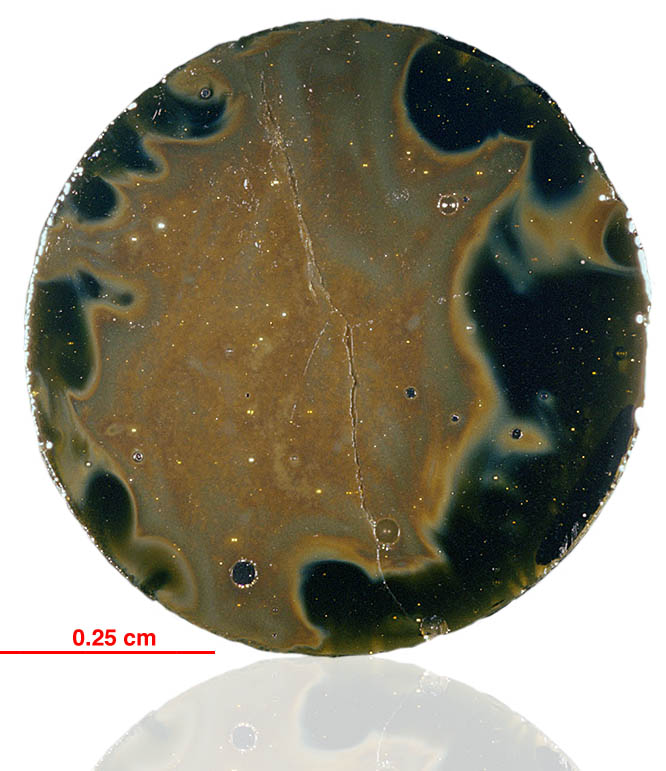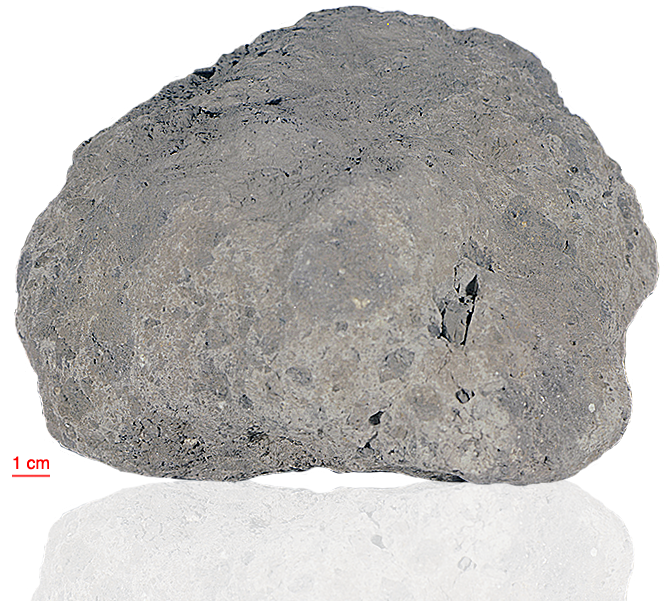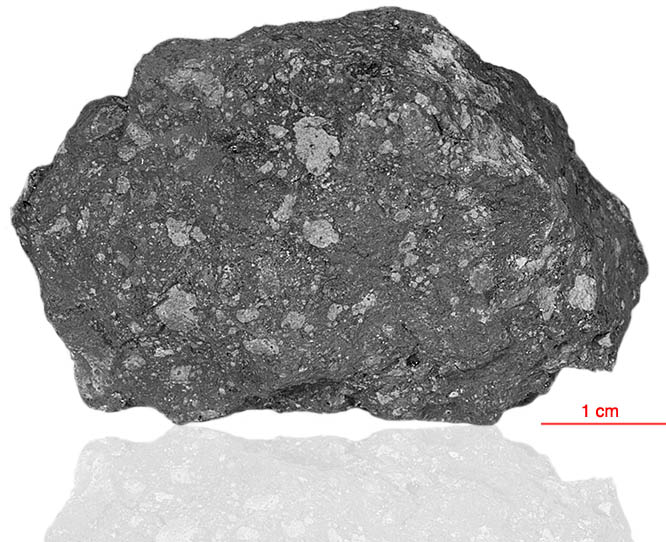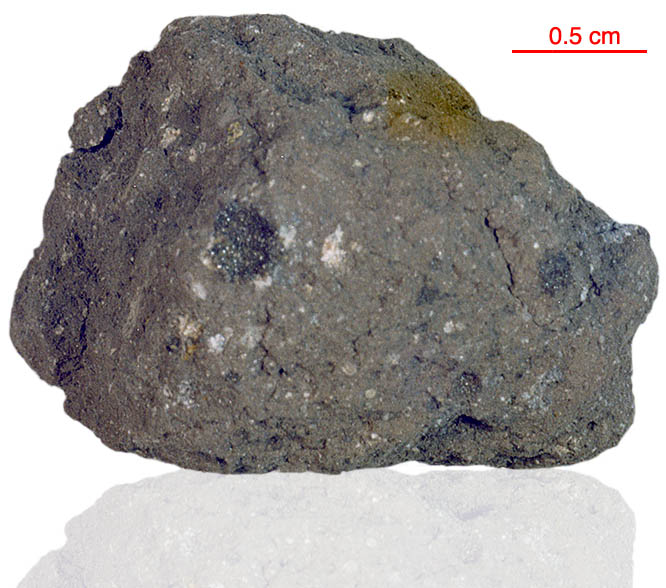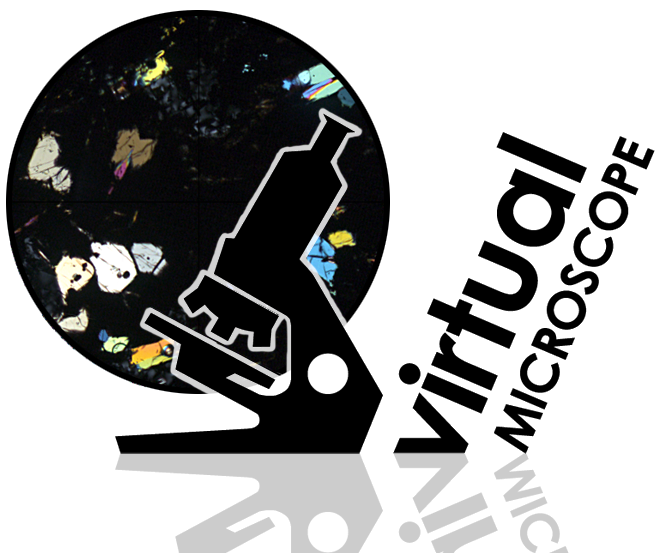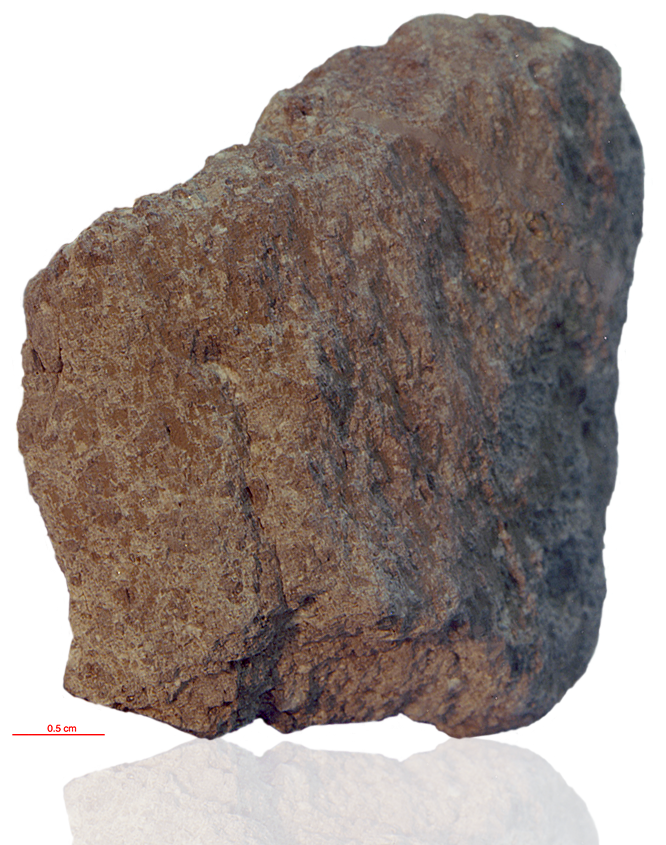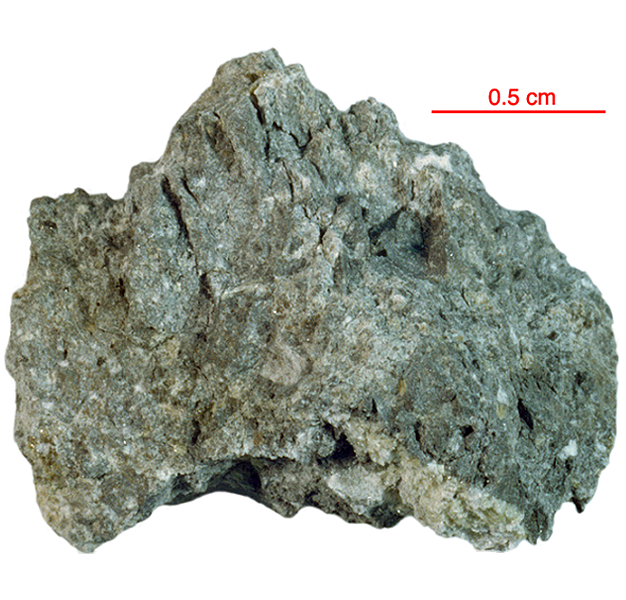
Fact sheet
Most of 14179 is a crystalline matrix breccia. It may be a piece of sample 14303 or 14305 which were returned in the same bag. Some thin sections contain anorthosite clasts but ours shows a clast of troctolitic granulite. The thin section is unusually thick with some feldspar crystals displaying orange birefringence colours.
The sample weighed 3.03 grams before analysis and is 3.97±0.01 billion years old (Ar/Ar).
Further details of this and other Apollo samples are here: http://curator.jsc.nasa.gov/lunar/
The Apollo 14 landing site was in a region formed by impact-basin debris.
Most of the 42 kilograms of rocks and soil collected on Apollo 14 are breccias (rocks that are composed of fragments of other, older rocks). In some cases, the rock fragments that form a breccia are themselves breccias. Such rocks obviously have experienced complex histories with multiple generations of impact events. Some breccias were heated enough that some of the material in the rock was melted.
Apollo 14 was launched on 31 January 1971.

